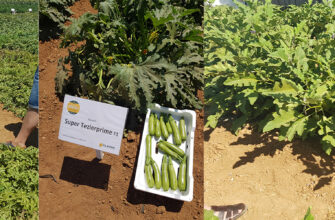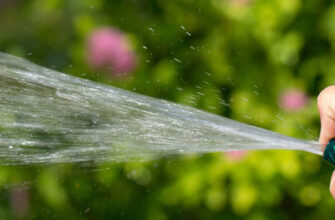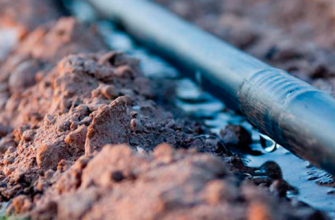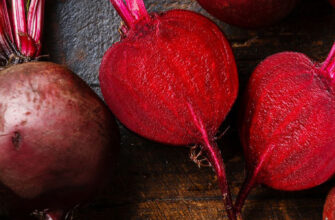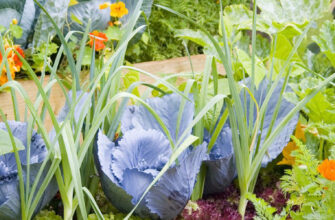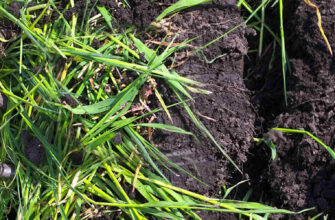Today, drip irrigation is the best method for watering vegetable and flower crops, as well as fruit trees. Drip irrigation has also been successfully applied in growing grain crops. It allows for regulated watering of plants directly in the root zone, as well as the application of fertilizers and pesticides.
There is a wide range of drip tapes and tubes available on the market, with various specifications. Read this article to learn how to choose a tape or tube for drip irrigation and what to pay attention to.
What is drip tape
Drip tape is a thin-walled polyethylene tube with built-in drippers (slits or emitters) placed at regular intervals. Under pressure, water flows from them into the root zone of the plants at a specified rate. Drip tapes can be used for all types of crops and can be laid on various types of terrain.
The structure of a drip tape includes the following elements: an inlet filter to prevent clogging; a labyrinth for pressure distribution; a water discharge basin for collecting water; and a slit through which water flows out.
When the drip irrigation system is turned on, water enters the labyrinth through the filter, which traps debris and regulates pressure and flow. Then the water reaches the discharge basin and is released into the soil in a measured amount through the openings. Drip tapes are laid on the soil with the drippers facing upward.
Types of drip tape
Based on the operating principle and the type of “dripper,” drip tapes are divided into several types, each with its own advantages and disadvantages.
Slit drip tape
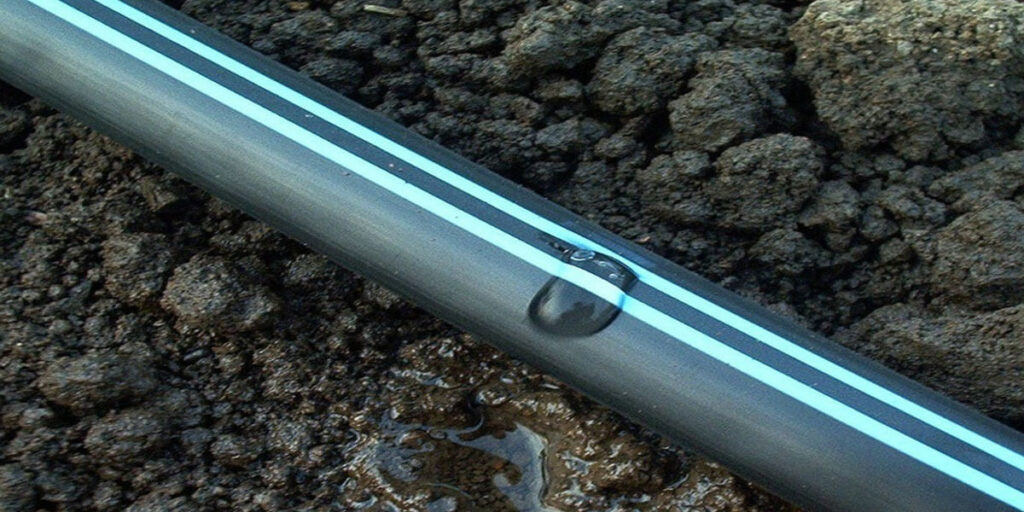
This is a polyethylene tube for drip irrigation with slit openings placed at regular intervals, made using a laser or a special blade. Water flows out through these slits. Inside the tube, there is a special flexible labyrinth that helps distribute the water and ensures even irrigation.
This type of tape is easy to install and fairly simple to use. However, without good filtration, the narrow openings often get clogged. Therefore, it is important to carefully monitor the cleanliness of the water being supplied, and ideally, install a filter for irrigation.
Emitter drip tape
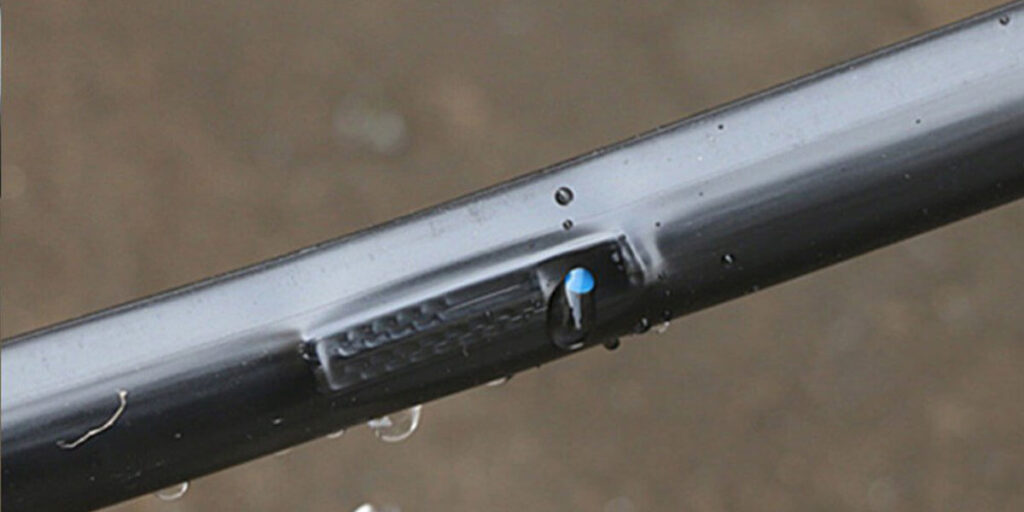
This type of drip irrigation tape has flat drippers, called emitters, embedded along its entire length. These emitters contain a special labyrinth that regulates water pressure. The labyrinth also helps to filter out various contaminants and protects the emitters from clogging.
Emitter drip tape comes in two types: pressure-compensated and non-compensated. In the non-compensated type, unlike the compensated one, water flow depends on the slope of the field and the length of the drip line. This must be taken into account when planning the irrigation system.
Because of this, you’ll need to purchase additional filters. However, non-compensated emitter tape is cheaper than the compensated version. It’s up to you to decide where to save.
Labyrinth drip tape
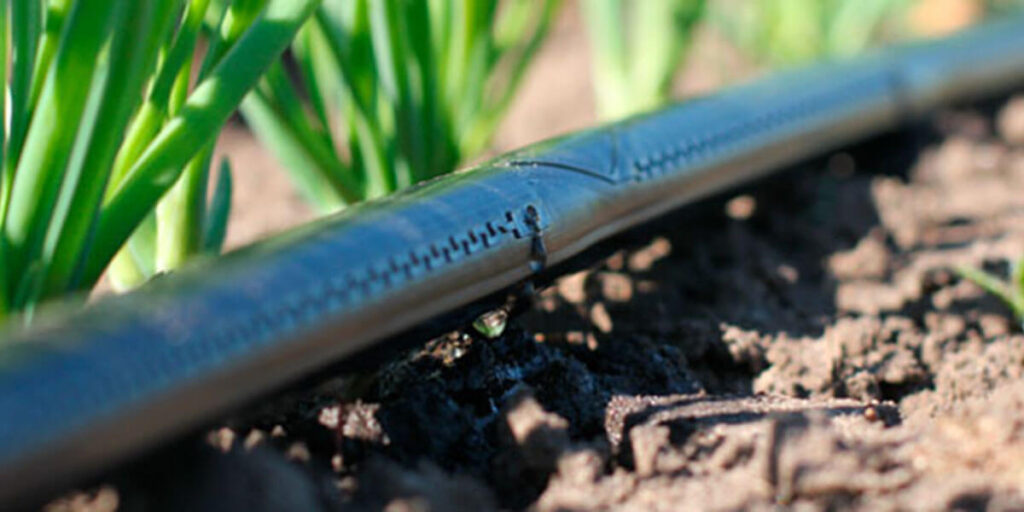
This is an outdated type of tape compared to the first two. In this system, the water channel is shaped like a zigzag. This labyrinth helps to reduce fluid pressure and, accordingly, decreases the outflow rate. One advantage of this type of drip tape is the even heating of the water, which has a positive effect on the irrigated plants.
Labyrinth drip tape is not very popular because it moistens the soil unevenly, is more difficult to install, and often gets damaged during use. Therefore, it is now rarely used.
Important! For watering a garden, field, or greenhouse, emitter or slit drip tape is an excellent choice.
Main characteristics of drip tape
Drip tape diameters
Drip tape for irrigation is available in two diameters: 16 mm and 22 mm. However, the most common is the 16 mm tape.
Drip tape thickness
The thickness affects the tape’s resistance to damage and environmental conditions, as well as its service life.
- 5 mils (0.125 mm) – suitable for irrigating annual crops with short maturation periods, both in open fields and greenhouses. Recommended for use on light soils;
- 6 mils (0.15 mm) – a universal drip tape for crops with medium vegetation periods;
- 7 mils (0.18 mm) – 8 mils (0.2 mm) – for irrigating crops with long vegetation periods. With careful use and proper drying, it can be used for 2–3 seasons;
- 10 mils (0.25 mm) – 12 mils (0.3 mm) – thick drip tape for use in rocky areas where insects and animals that can damage it are often present;
- 15 mils (0.375 mm) – a special drip tube for irrigation in rocky soil, where there is a high risk of mechanical damage.
Important! The thickness of the drip tape must be selected according to the type of soil and usage conditions. For greens, the thinnest tape is suitable, while for field crops—especially in rocky soils—a thick-walled tube is a better choice.
Distance between drippers
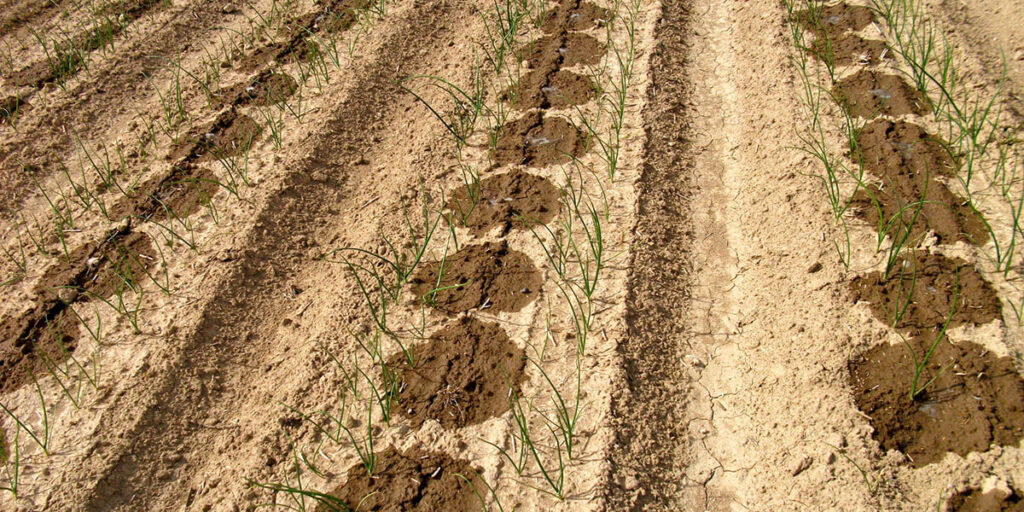
This parameter is selected based on the crop being grown and its planting pattern. Keep in mind that for densely planted crops, the spacing should be small, while for large, bushy plants, it should be significantly wider. It is important to ensure that water reaches the roots of every plant.
- 10 cm, 15 cm, 20 cm – for densely planted crops (e.g., onion, garlic, lettuce, raspberry), or when growing on sandy soils. This type of drip tape is also needed when a high water flow rate per meter is required or for continuous line irrigation;
- 30 cm – for crops with medium spacing (garden strawberries, pepper, cucumber, potato, etc.). Perfect for laying on medium-textured soil;
- 40 cm – for crops planted at wide intervals (tomato, pumpkin, zucchini, watermelon, etc.). These tapes are also used to create long irrigation lines.
Water flow rate per dripper
When choosing, you need to consider the water source condition, length of the irrigation line, crop water needs, planting pattern, and soil moisture capacity.
- 2.0–3.8 l/hour – for double-row planting schemes of crops with well-developed root systems that require a large amount of water for growth and development. This is especially relevant for cultivation on sandy loam soils with rapid moisture absorption;
- 1.0–1.5 l/hour – a universal flow rate suitable for irrigating most crops on various soil types;
- 0.6–0.8 l/hour – for long irrigation lines using water sources with low output, as well as for soils that retain moisture for a long time. However, these drippers require good water filtration.
Advice! In arid climates on sandy soils, it is better to choose drip tapes with a flow rate not exceeding 1.6 l/hour, while on clay soils, tapes with higher water flow are preferable.
Operating pressure of drip tape
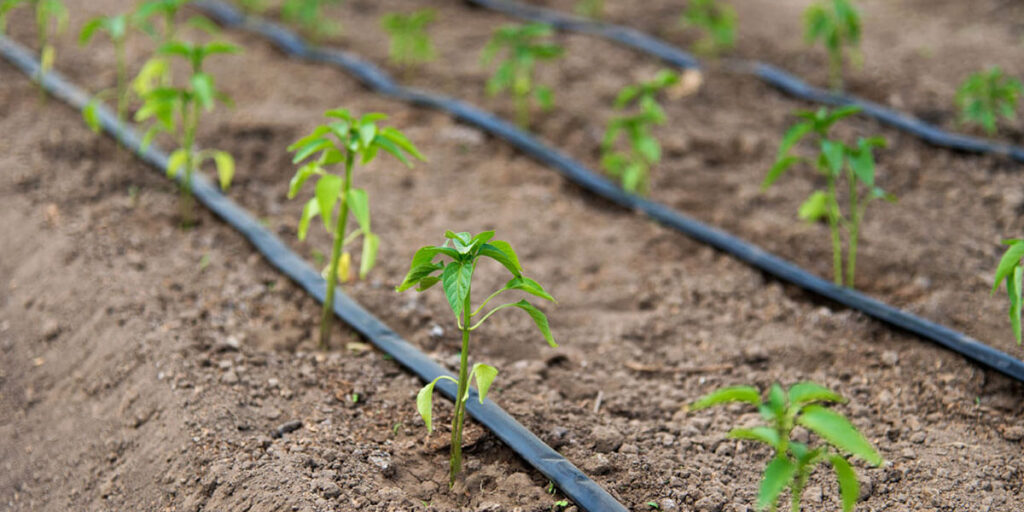
This is the tape’s ability to withstand a certain pressure, because if the pressure is exceeded, the tape may burst, and if it drops, the water flow rate will decrease. If a water source with high pressure is used, a pressure reducer is installed to lower it.
Which is better – drip tape or drip tubing
- Wall thickness. Drip tape for irrigation has thinner walls and is not designed for long-term use. Its service life can be extended up to a maximum of 4 seasons with very careful maintenance. However, it is convenient to collect and coil into rolls. Drip tubing has thicker walls, making it more resistant to mechanical damage. Tubing can be used for 8 to 10 years without removing it for the winter, just by cleaning the system.
- Emitter shape. The tape has built-in emitters with a flat shape, while the tubing’s emitters are cylindrical. Despite their different shapes, the emitters have almost similar output characteristics.
- Distance between emitters. The tape has emitter spacing (“pitch”) from 15 to 33 cm, while tubing spacing ranges from 20 cm to 2 meters. Therefore, tape is used for densely planted annual crops, while drip tubing is perennial and suitable for growing perennial crops planted in rows at regular intervals (fruit trees, grapes, etc.).
To create effective irrigation, it is important to choose drip tape or tubing with the appropriate characteristics. By selecting the optimal irrigation system for your field or greenhouse, your plants will benefit from proper care and produce a high yield.
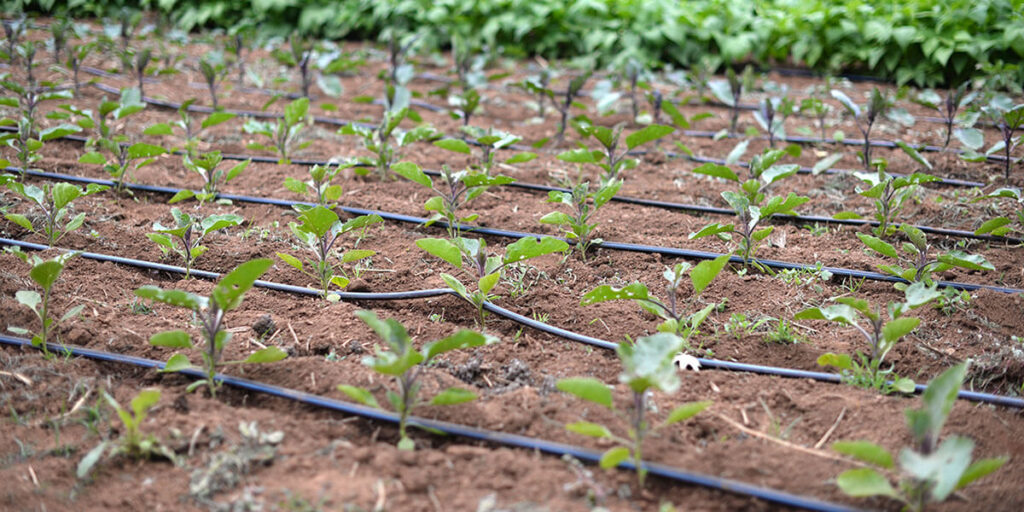
If you find it difficult to decide which tape to use, we recommend consulting specialists who represent the manufacturing company or sell drip irrigation products.
If you have found a spelling error, please, notify us by selecting that text and pressing Ctrl+Enter.

